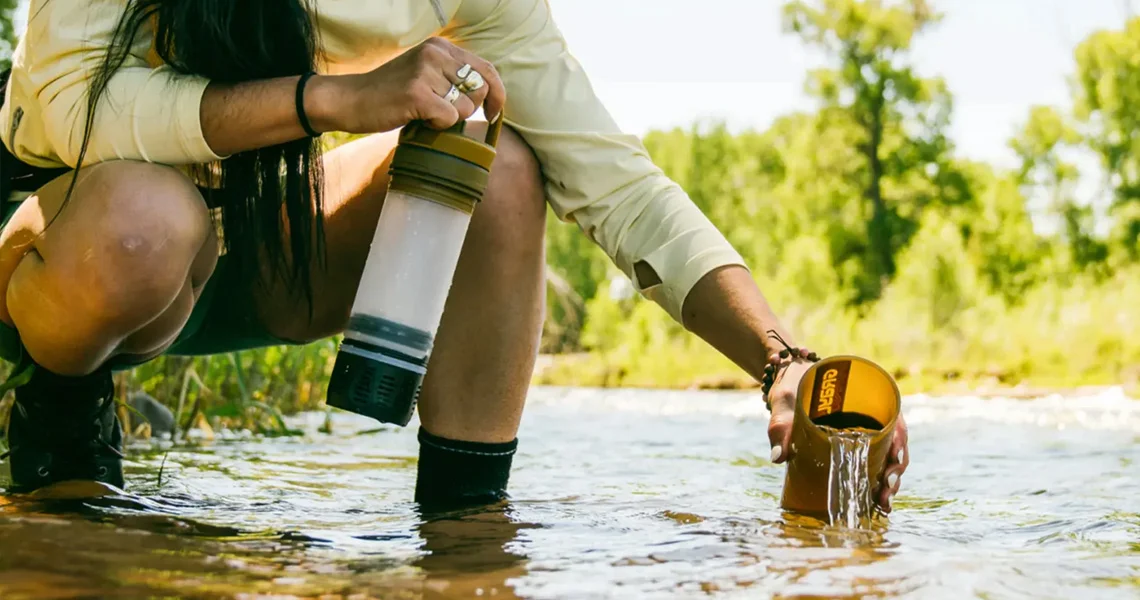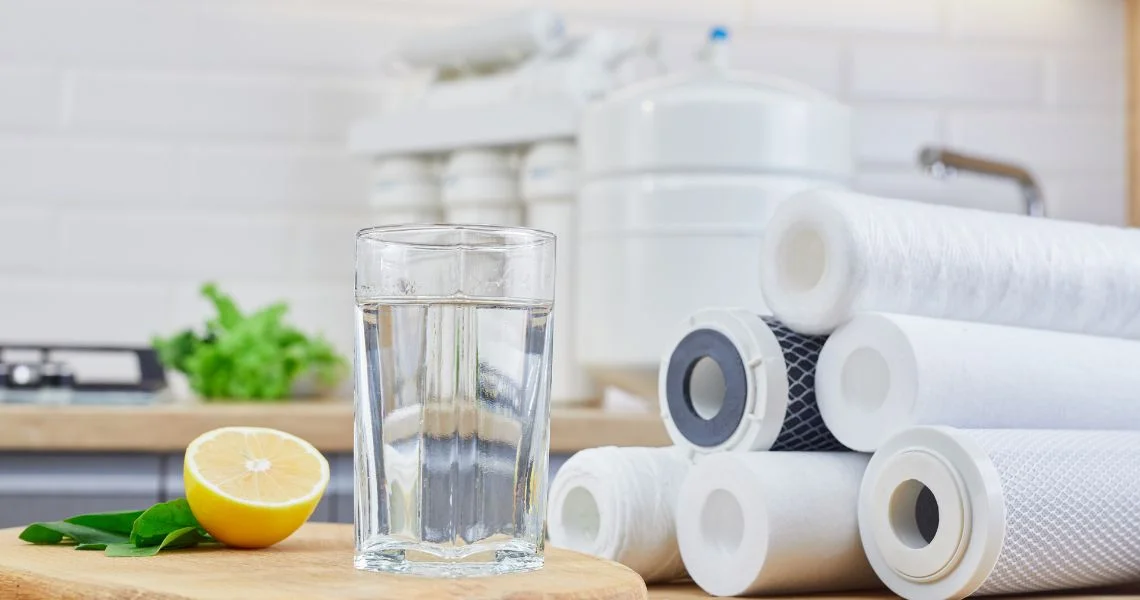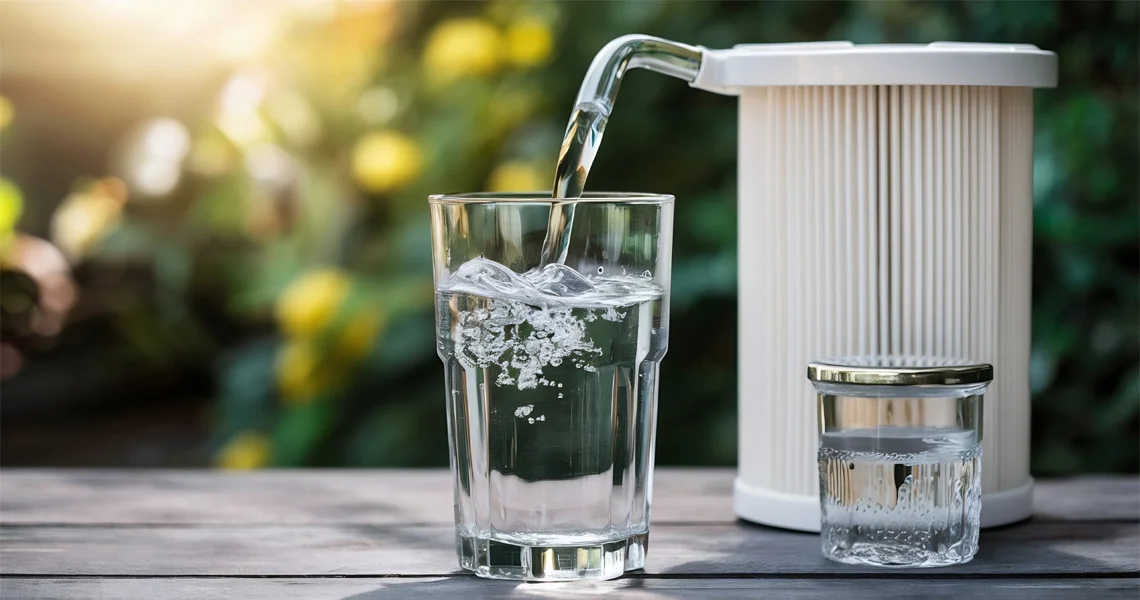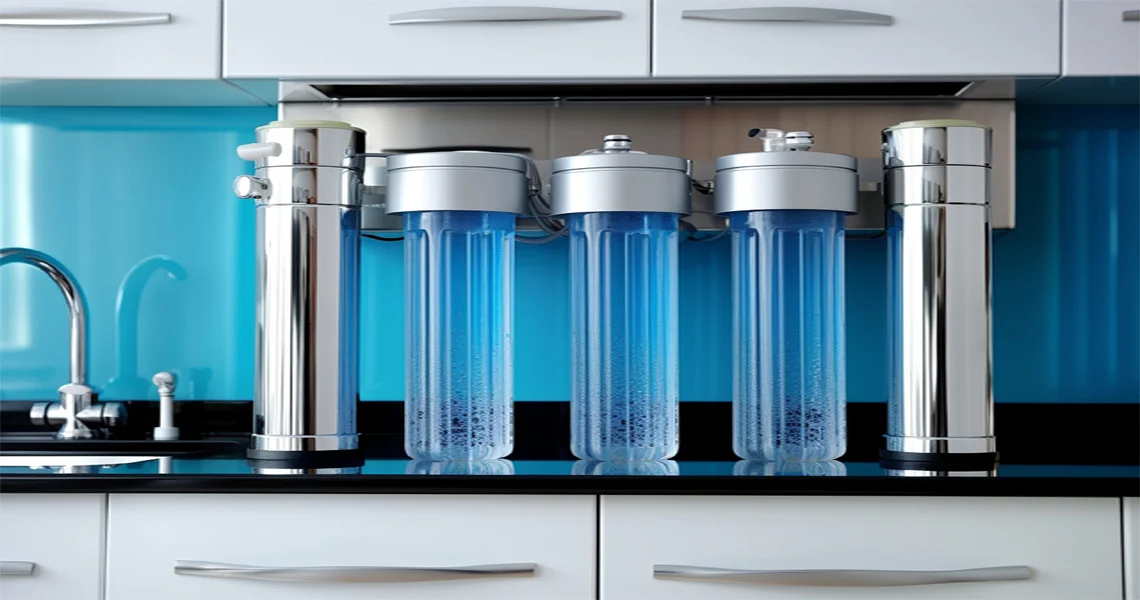It’s time to get out and explore the wonders of nature, and there is no reason for you not to. With your backpack on and your spirits lifted high, the only thing left is the water in the form of a spring. The best water purifier for backpacking is necessary for the hiker who wants to remain safe and healthy in the backcountry. However, since there are many alternatives out there, it could be challenging to decide which is perfect for the trip. But when you have identified the ideal backpacking water purifier, it’s equally important to learn how to take proper care of it to help it last and continue to offer its services.
Choosing the Right Backpacking Water Purifier
Now, let’s take a short detour on choosing the right water purifier for your backpacking trips.
- Type of purifier: Consider what type of water purification system you require, whether a filter, purifier, or both. While filters effectively eliminate particulate matter such as dirt and parasites, purifiers kill bacteria and viruses. A mix between one and the other is usually perfect, especially for a backpacking adventure.
- Weight and size: A small and light compact water purifier is handy when traveling with a backpack. Consider the size of the pack and how much room you can devote to the water filter.
- Flow rate: The flow rate defines the speed at which water passes through the filtration system. A higher flow rate is typically used for backpacking.
- Filter life: The filter life concerns the amount of water that passes through the filter and requires a change before its effectiveness drops. When choosing the filter life, consider the time you intend to spend on your trip.
While backpacking purifiers are essential for outdoor use, homeowners often compare them with systems like the best whole home water purification system to protect their families at home.
Maintaining your Backpacking water purifier
Backpacking water purifiers require maintenance to be on their best to ensure you have the best in use. Here’s a step-by-step guide:
1. Clean your water purifier after each use
- After washing the cleaner with water, allow it to air dry before using it to remove some dirt.
- When the water purifier pump backpacking are used for backpacking, they must be disassembled for clearance and all the parts washed as directed by the manufacturer.
- Ensure all the separate pieces are allowed to dry well before they are packed away.
2. Backflush your water purifier regularly
- Backflushing also ensures that the trapped particles are washed off to increase the filter’s lifespan.
- Always refer to the manufacturer’s instructions regarding the backflushing process.
- Several water purifier backpacking models exist, and for some of them, backflushing can be performed by reversed water flow passing through the filter.
3. Store your water purifier properly
- Ensure your water purifier is cool, dry, and shielded from the sun.
- Always ensure that your water purifier is stored in a clean environment. Do not place it in a backpack or any other dark, enclosed area.
4. Replace the filter as needed
- Using a water purifier filter typically depends on the model and water quality of your area.
- You should always flush the filter and inspect it for any signs of wear if the flow rate reduces or the water turns cloudy.
- The filter should be cleaned based on the manufacturer’s direction or if it is not working as expected.
5. Disinfect your water purifier periodically
- Cleaning your water purifier is also important as it reduces its bacterial and viral content.
- One must use a well-suited water purifier disinfectant for backpacking water purifiers.
- Strictly adhere to the disinfection process outlined by the manufacturer of the mattress.
Common Water Purification Mistakes
To ensure you have clean water while on a backpacking trip, avoid these mistakes when using your water purifier. Some of the common mistakes that are made include not back-flushing the filter when it is full. However, contaminants may accumulate within the filter over long periods, creating a barrier for clean air. Another mistake is improper purifier usage, such as when it is already beyond the filter life. Failure to replace the filter limits the quality of water you will get since the filter is already old. Also, its storage can affect the condition of your purifier if it is stored inappropriately. One should not expose it to very high or very low temperatures and should not leave it wet since this would reduce its useful life. In fact, choosing poor-quality units is one of the biggest top water filtration systems mistakes people make, since not every option is built for durability or safety.
Water Purification Alternatives
Despite the efficiency of backpacking water purifiers, there are other ways of putting water through the process in the wild. Water purification tablets are lightweight, easily portable, and effective as they eliminate bacteria and viruses. However, they may not effectively filter out all pollutants, and the water coming out has an unpleasant taste to some people. The simplest and most effective way to purify water is to boil it, which takes time and consumes fuel. Another technique is the UV water purifier, which uses ultraviolet light to eliminate pathogens in water. These devices are often portable and fast; however, they can be less efficient when dealing with specific viruses. For longer-term use, such as in homes in areas like water filtration Pensacola FL, people often prefer whole-house systems for consistent safe water.
Tips for Efficient Water Purification
When backpacking, you can follow several useful tips to get the most out of your water purification process. Running water through a cloth or bandana before it reaches the purifier is recommended to filter out larger debris and ease the burden on the unit. Filtering or selecting water with a low particulate matter content can also help increase the filters’ duration. Also, if your water purifier has a case, it is helpful to store it in one so that it does not get damaged or contaminated. To avoid contamination, you should not fully immerse the whole purifier when refilling your water bottle. Incorporating these tactics will help you improve the efficiency of your backpacking water purifier and provide fresh water to drink while on a trip.
Even though these are tips for outdoor use, many homeowners in Florida rely on a residential water conditioning system Florida for daily purification needs at home.
Additional tips for maintaining your backpacking water purifier
- Always ensure you have a water purification tablet if the water purifier doesn’t work.
- If you do not want to use the sun method, take your time to understand other methods of water purification using chemicals.
- Keep your water purifier away from areas exposed to freezing temperatures.
- Do not apply scouring powder, strong detergents, or metal objects on the surface of your water purifier.
- If you need to carry lots of equipment, consider purchasing a water purifier backpack that you can use to store and protect your tools.
And if you’re comparing gear upgrades, outdoor adventurers sometimes check consumer reports like the best water softener 2024 list to find trustworthy recommendations for home and trail use.
By following these maintenance tips, you can extend the life of your backpacking water purifier and ensure that you have safe drinking water on your next adventure. Remember, a well-maintained water purifier is essential for a safe and enjoyable backpacking experience.
Investing in the best reliable water filter purifier for backpacking is crucial for your safety and enjoyment on the trail. By understanding the different types of water purifiers and following proper maintenance practices, you can confidently rely on your water filtration system backpacking to provide clean, safe drinking water.
So, pack your backpack, grab your water purifier, and hit the trail confidently, knowing that you have taken the necessary steps to protect yourself from waterborne illnesses. Happy backpacking!
Local & Regional Considerations for Water Purification
Water purification needs can vary depending on where you live or travel. In humid coastal regions such as Florida, outdoor water sources may contain higher levels of bacteria, organic matter, and even salt intrusion from coastal aquifers. This makes choosing the right purifier or filtration method especially important for backpackers exploring the area.
For homeowners, local water quality is just as critical. For example, water filtration Pensacola FL solutions are widely sought after to deal with regional water challenges, including sediment, chlorine, and hard water minerals. While backpackers focus on portable purifiers, residents often invest in the best whole home water purification system to ensure safe, clean drinking water from every tap.
By considering local conditions—whether on the trail or at home—you can choose the most effective system for your needs and extend the lifespan of your equipment.
Frequently Asked Questions (FAQs)
1. What is the difference between a backpacking water filter and a water purifier?
A water filter removes dirt, protozoa, and some bacteria, while a purifier eliminates viruses and other harmful microorganisms. For maximum safety on the trail, many hikers prefer a system that combines both. At home, people often choose the best whole home water purification system for complete protection.
2. How often should I replace the filter in my backpacking purifier?
A water filter removes dirt, protozoa, and some bacteria, while a purifier eliminates viruses and other harmful microorganisms. For maximum safety on the trail, many hikers prefer a system that combines both. At home, people often choose the best whole home water purification system for complete protection.
3. Can I use a water purifier in freezing temperatures?
Not recommended. Freezing can damage the filter’s internal membranes, making it unsafe. Always keep your purifier warm in cold conditions. Homeowners in colder climates often turn to a residential water conditioning system Florida or other whole-house solutions that are built for durability.
4. Are water purification tablets a good backup?
Yes, tablets are lightweight and reliable as a backup method. They kill bacteria and viruses but may leave a chemical taste. For long-term home use, however, a water filtration system Pensacola FL or similar system is a more practical and effective choice.
5. What are the top water purification options for backpacking?
The top water filtration systems for backpackers include gravity filters, squeeze filters, UV purifiers, and chemical tablets. Each has pros and cons—gravity filters work well for groups, UV purifiers are fast, and squeeze filters are ultra-light for solo hikers.





